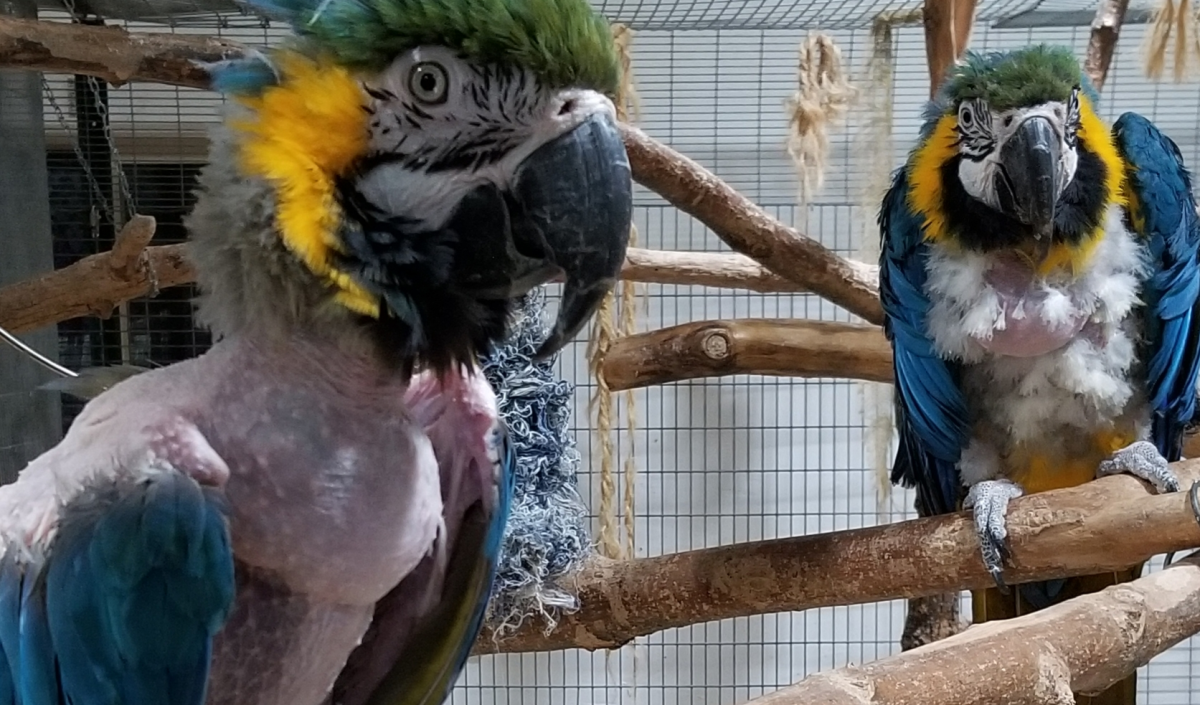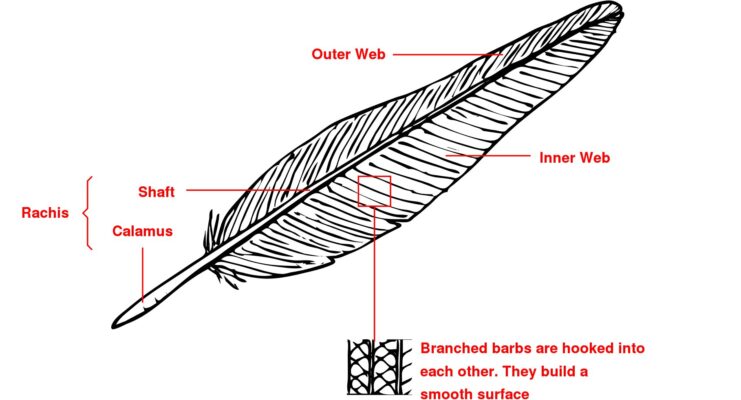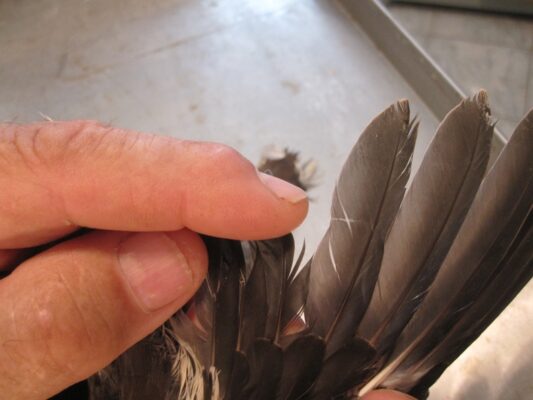Blogs, Avian Articles
Mystery Behind Parrots Stress Bars on Feathers: A Comprehensive Guide
Mystery Behind Parrots Stress Bars no Feathers
Stress Bars no Feathers, Parrots are not only known for their vibrant plumage but also for the valuable insights their feathers provide into their overall health. Among the various indicators, stress bars on feathers can offer crucial clues about a parrot’s well-being. In this comprehensive guide, we delve into the intricacies of parrots stress bars on feathers, uncovering the causes, symptoms, and preventive measures to ensure your feathered companion thrives.
Understanding Parrots Stress Bars no Feathers
Parrots stress bars on feathers, also known as stress marks or stress lines, manifest as visible lines or bands across the feather shafts. These markings serve as telltale signs of stress or nutritional deficiencies during the feather growth process.
What Are Stress Bars?
Stress bars are interruptions in the smooth growth of feathers, appearing as dark lines or bands across the feather shafts. These bars indicate periods of stress or physiological disturbances experienced by the parrot during feather formation.
The Anatomy of Feathers
To comprehend stress bars fully, it’s essential to understand the anatomy of feathers. Feathers consist of a central shaft, called the rachis, from which barbs branch out. Barbs further split into smaller structures known as barbules, which interlock to form a sturdy and aerodynamic surface.
Formation Process
During feather growth, parrots undergo molting, shedding old feathers to make way for new ones. Stress bars typically form when there’s a disruption in the normal growth cycle of feathers, often triggered by stressors or nutritional imbalances.
Causes of Parrots Stress Bars no Feathers
Several factors can contribute to the development of stress bars on a parrot’s feathers, ranging from environmental stressors to health issues.
Environmental Factors
- Changes in Environment: Relocation, the introduction of new cage mates, or alterations in routine can induce stress in parrots, leading to the formation of stress bars.
- Noise Pollution: Excessive noise levels, such as loud music or construction sounds, can agitate parrots and impact their feather health.
- Inadequate Lighting: Insufficient exposure to natural or artificial light can disrupt the hormonal balance in parrots, affecting their feather growth.
Nutritional Deficiencies
- Imbalanced Diet: Parrots require a diverse and balanced diet comprising fruits, vegetables, seeds, and pellets. Inadequate nutrition can result in feather abnormalities, including stress bars.
- Vitamin and Mineral Deficiencies: Deficiencies in essential nutrients like vitamins A, D, and E, as well as calcium and protein, can impair feather development and lead to the formation of stress bars.
Health Issues
- Diseases and Infections: Underlying health conditions, such as viral or bacterial infections, metabolic disorders, or parasitic infestations, can compromise a parrot’s immune system and impact feather quality.
- Stress and Anxiety: Psychological stressors, such as loneliness, fear, or inadequate socialization, can trigger physiological responses in parrots, including the development of stress bars on feathers.
Symptoms of Parrots Stress Bars on Feathers
Identifying stress bars on a parrot’s feathers requires careful observation and attention to detail. While these markings may vary in appearance depending on the severity and cause, certain symptoms can indicate their presence.
Visible Dark Lines or Bands
Stress bars typically appear as dark lines or bands across the feather shafts, disrupting the uniformity of the plumage. These markings may be more pronounced during molting periods.
Feather Abnormalities
In addition to stress bars, parrots may exhibit other feather abnormalities, such as fraying, dullness, or uneven growth. These changes in feather texture or appearance can signify underlying health issues.
Behavioral Changes
Parrots experiencing stress or discomfort due to the presence of stress bars may exhibit behavioral changes, including increased vocalization, aggression, or withdrawal.
Preventing and Managing Parrots Stress Bars no Feathers
Effective management of parrot stress bars no feathers involves addressing underlying causes and implementing preventive measures to promote overall well-being.
Dietary Modifications
Ensuring a balanced and nutritious diet is paramount in preventing stress bars on feathers. Consult with an avian veterinarian to develop a diet plan tailored to your parrot’s specific nutritional needs.
Environmental Enrichment
Creating a stimulating and enriching environment for your parrot can alleviate stress and promote healthy feather growth. Provide ample opportunities for mental and physical stimulation through toys, perches, and social interaction.
Regular Veterinary Check-ups
Schedule regular veterinary check-ups for your parrot to monitor its overall health and address any underlying medical conditions promptly. Routine examinations can help detect early signs of illness or nutritional deficiencies.
Stress Management
Implement stress-reducing strategies to minimize environmental stressors and promote a sense of security for your parrot. Establish consistent routines, provide adequate socialization, and create a calm and peaceful living environment.
FAQs (Frequently Asked Questions)
What are stress bars on parrots’ feathers? Stress bars on parrots’ feathers are visible lines or bands across the feather shafts, indicating periods of stress or physiological disturbances during feather growth.
What causes stress bars on parrots’ feathers? Stress bars can be caused by various factors, including environmental stressors, nutritional deficiencies, diseases, infections, and psychological stress.
How can I prevent stress bars on my parrot’s feathers? Preventive measures include providing a balanced diet, creating an enriching environment, scheduling regular veterinary check-ups, and implementing stress management techniques.
Are stress bars reversible in parrots? While addressing underlying causes can prevent further development of stress bars, existing markings may persist until the affected feathers molt and are replaced by new, healthy feathers.
Can stress bars indicate serious health issues in parrots? Yes, stress bars can sometimes indicate underlying health problems or chronic stress in parrots, making it essential to monitor feather health and seek veterinary care if needed.
How often do parrots molt, and can stress bars occur during molting? Parrots molt periodically to replace old feathers with new ones. Stress bars can indeed occur during molting, especially if the bird experiences stress or nutritional deficiencies during this process.
Conclusion
Understanding parrots stress bars on feathers is crucial for ensuring the well-being of these intelligent and colorful birds. By identifying potential stressors, addressing nutritional needs, and providing a nurturing environment, parrot owners can help their feathered companions thrive. Regular veterinary care and attentive observation are essential in maintaining optimal feather health and overall happiness for pet parrots.



